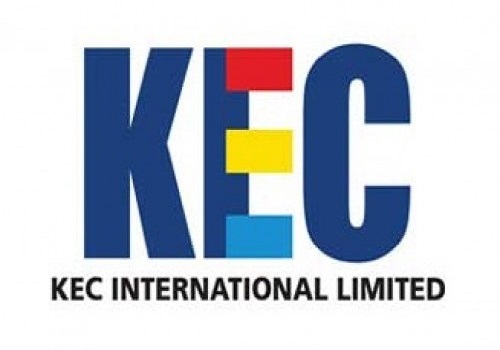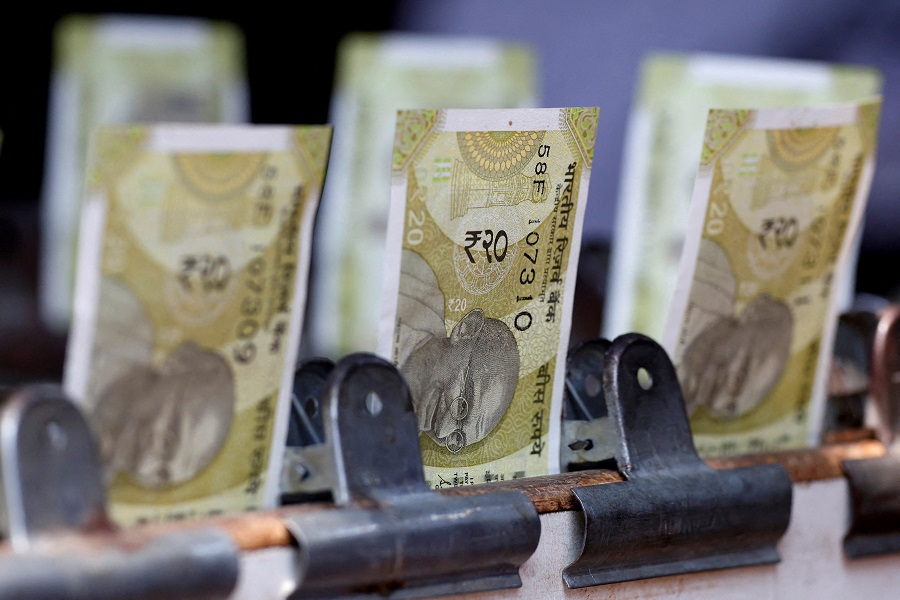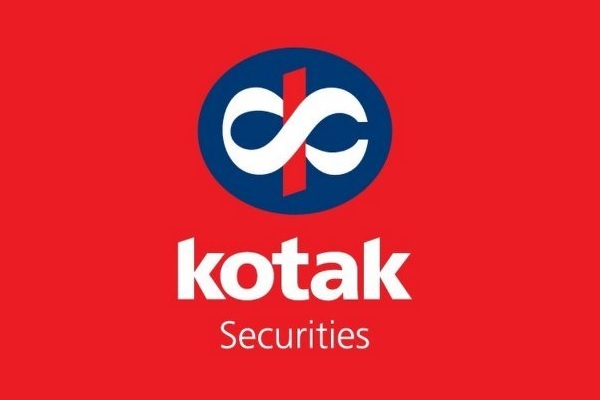Gold trading range for the day is 65210-66370. - Kedia Advisory

Gold
Gold prices surged by 0.64% in the previous trading session, settling at 65897, as investors absorbed hotter-than-expected U.S. inflation data while still anticipating a Federal Reserve interest rate cut in June. The rise in U.S. consumer prices in February, surpassing expectations, underscored concerns about persistent inflationary pressures, albeit not derailing expectations of impending rate cuts by the Fed. Despite the robust inflation figures, Fed policymakers are still projected to initiate rate cuts by June, with market sentiment indicating a 65% likelihood of such a move, albeit slightly lower than before the data release. Investor attention now turns to upcoming U.S. economic data releases, particularly retail sales, the producer price index, and weekly initial jobless claims, slated for Thursday. Central banks' gold purchases continue to support the precious metal's value, with the Central Bank of Turkey notably increasing its official gold holdings, and the People’s Bank of China continuing its streak of monthly additions. Such accumulation efforts have bolstered total gold holdings to near-record levels, showcasing sustained central bank interest in gold as a reserve asset. From a technical standpoint, the gold market witnessed short covering, evidenced by a -3.28% drop in open interest alongside a significant price increase of 416 rupees. Gold is currently finding support at 65550 levels, with potential downside movement towards 65210, while resistance is anticipated at 66130, with a potential breakthrough targeting 66370 levels.
Trading Ideas:
* Gold trading range for the day is 65210-66370.
* Gold prices edged higher as investors still banked on a Federal Reserve interest rate cut in June.
* Investors digested hotter-than-expected U.S. inflation data
* Traders now see about a 65% chance of a June cut, slightly lower than the 72% seen before.
Silver
Silver demonstrated a significant surge yesterday, closing up by 1.79% at 75170, driven by market anticipation of the first interest rate cut by the Federal Reserve in June. However, doubts emerged regarding this expectation due to unexpectedly persistent inflation data in the United States for February. The monthly core inflation data exceeded expectations, rising by 0.4%, while the annual core CPI stood at 3.8%, higher than anticipated but slightly lower than the previous reading. Fed policymakers closely monitor core inflation figures as they strip off volatile components like food and energy prices, providing a clearer picture of underlying inflationary pressures. The hotter-than-expected inflation data has tempered expectations for near-term rate cuts by the Fed, causing a decline in the probability of a rate cut in June to 65% from over 72% previously. Fed officials have reiterated that rate cuts would only be considered if there's confidence in a sustainable return of inflation to the 2% target. Investor attention now turns to upcoming economic indicators from the US, particularly the Producer Price Index (PPI) and Retail Sales data for February. From a technical perspective, the market witnessed renewed buying interest, as evidenced by a notable increase in open interest and a substantial price uptick of 1320 rupees. Silver is currently finding support at 74160, with a potential downside test towards 73145. On the upside, resistance levels are likely to be encountered at 75730, with a breakout potentially leading to testing the 76285 level.
Trading Ideas:
* Silver trading range for the day is 73145-76285.
* Silver rose as markets opted to keep their bets on interest rate cut by Fed in June.
* Stubborn US inflation for February has increased the uncertainty over Fed rate cuts in June.
* Fed policymakers have been reiterating that rate cuts would be appropriate only if they are confident
Crude oil
Crude oil prices surged by 2.05% in the previous session, settling at 6579, following unexpected declines in U.S. crude inventories as reported by the EIA Petroleum Status Report. The data revealed a reduction of 1.536 million barrels in crude stocks for the week ending March 8, 2024, contrary to market expectations of a 1.338 million barrel increase. This marked the first decline in seven weeks and contributed to a bullish sentiment in the oil market. Additionally, gasoline stocks witnessed a significant drop of 5.662 million barrels, the most in nearly a year, surpassing forecasts, while distillate stockpiles saw an unexpected increase of 888 thousand barrels. These figures underscored shifts in supply dynamics, with gasoline experiencing a notable drawdown while distillates defied consensus expectations by rising. Iraq's oil production exceeding its quota for the second consecutive month, as reported by OPEC, added to market dynamics. Moreover, the U.S. Energy Information Administration's projection of a faster-than-expected increase in U.S. oil production for the year provided further context, indicating potential support for global supplies. From a technical standpoint, the crude oil market witnessed fresh buying momentum, with a substantial increase in open interest by 101.22% alongside a price rise of 132 rupees. Crudeoil is currently finding support at 6477 levels, with potential downside movement towards 6376, while resistance is anticipated at 6636, with a potential breakthrough targeting 6694 levels. These technical indicators suggest an active trading environment, driven by shifts in supply dynamics, geopolitical factors, and demand forecasts.
Trading Ideas:
* Crudeoil trading range for the day is 6376-6694.
* Crude oil rose after US data showed an unexpected decrease in crude stocks.
* EIA report showed crude oil inventories in the US fell by 1.536 million barrels last week
* EIA raised its 2024 world oil demand growth forecast by 10,000 barrels per day to 1.43 million bpd.
Natural gas
Natural gas experienced a decline of -1.13% yesterday, settling at 140.1, primarily driven by revised forecasts indicating lower demand over the next two weeks. This downward pressure was further exacerbated by reduced gas flows to liquefied natural gas (LNG) export plants, attributed to ongoing outages at Freeport LNG's facility in Texas. The market has been grappling with near-record output levels, mild weather, and decreased heating demand throughout the winter, leading utilities to store significantly more gas than usual for this time of year. The U.S. Energy Information Administration's (EIA) latest outlook suggests that despite the current low prices stimulating record-high gas consumption in 2024, gas production is anticipated to decline for the first time since 2020. This reduction in output is attributed to energy firms delaying well completions and scaling back drilling activities, leading to a decrease in gas output in the Lower 48 U.S. states. Meteorologists project continued warmer-than-normal weather across the Lower 48 states until March 17, followed by a shift to near- to colder-than-normal temperatures from March 18-28. This weather outlook may influence demand patterns in the coming weeks. From a technical standpoint, the market is experiencing long liquidation, as evidenced by a drop in open interest by -1.88% and a decline in prices by -1.6 rupees. Natural gas is currently finding support at 137.8, with a potential downside test towards 135.5. On the upside, resistance levels are anticipated at 142.6, with a potential breakout leading to testing the 145.1 level.
Trading Ideas:
* Naturalgas trading range for the day is 135.5-145.1.
* Natural gas slid on forecasts for less demand over the next two weeks.
* Also weighing on prices has been the reduced amount of gas flowing to LNG export plants
* Output is down as several energy firms, delay well completions and cut back on other drilling activities.
Copper
Copper prices surged by 2.3% in the previous session, closing at 752.9, following a significant development in the Chinese copper industry. Chinese smelters, responsible for processing half of the world's mined copper, announced a joint production cut agreement. This decision was prompted by a need to address a shortage of raw materials and cope with dwindling profits, particularly as copper concentrate fees hit their lowest levels in over a decade. Although the agreement didn't specify volumes or timing for the production cuts, it signals a proactive move by smelters to manage their operations in a challenging market environment. The bullish momentum in copper prices was evident on the Shanghai Futures Exchange (SHFE), where copper reached a two-year high of 70,460 yuan ($9,796) per ton. However, despite the positive news from China, copper inventories in SHFE-monitored warehouses saw a steep increase to 239,245 tonnes as of March 8, underscoring concerns about oversupply in the market. Clarity on demand prospects for copper could emerge from China's upcoming loan data release, which includes total social financing numbers, serving as a gauge for future metals consumption. Additionally, Chile's total copper production rose marginally by 0.51% to 433,800 metric tons, with state giant Codelco experiencing a notable decline in production by 15.6% to 107,000 tons. From a technical standpoint, the copper market witnessed fresh buying interest, with a notable increase in open interest by 7.98% alongside a price uptick of 16.9 rupees. Copper is currently finding support at 741.3 levels, with potential downside movement towards 729.6, while resistance is anticipated at 759.8, with a potential breakthrough targeting 766.6 levels.
Trading Ideas:
* Copper trading range for the day is 729.6-766.6.
* Copper prices soared after Chinese smelters, agreed on a joint production cut.
* The rise started on SHFE, where copper reached a two-year high of 70,460 yuan ($9,796) per ton.
* Copper inventory in SHFE rose steeply to 239,245 tonnes from 30,905 tonnes in the beginning of the year.
Zinc
Zinc demonstrated a modest uptick of 0.63% yesterday, settling at 224.45, primarily fueled by supply concerns stemming from production cuts at the Seokpo smelter in South Korea, one of the world's six-largest smelters. This reduction in output, if sustained or escalated to a potential shutdown, could significantly impact the market's balance, potentially narrowing the anticipated surplus of 300,000 tons or even pushing it into a deficit. However, the upside potential was constrained by continuous inflows of imported zinc ingots, partially replenishing the supply, coupled with sluggish consumption recovery. Moreover, zinc prices found support from expectations of higher demand following remarks from Federal Reserve policymakers hinting at potential interest rate reductions this year, alongside softer-than-expected labor market data from the US. Conversely, downward pressure prices. Despite ongoing manufacturing contraction for the fifth consecutive month in February, the government refrained from rolling out additional stimulus measures during its parliament meeting. Furthermore, elevated inventories at LME warehouses, exceeding 275,000 tons, added to the downward pressure on zinc prices. Notably, data from the International Lead and Zinc Study Group highlighted a global zinc market deficit of 62,600 metric tons in December 2023, compared to a deficit of 53,500 tons in November. From a technical perspective, the market witnessed fresh buying interest, with a marginal increase in open interest and a rise in prices by 1.4 rupees. Zinc is currently finding support at 223.5, with a potential downside test towards 222.4. Resistance levels are expected at 225.4, with a breakout potentially leading to testing the 226.2 level.
Trading Ideas:
* Zinc trading range for the day is 222.4-226.2.
* Zinc gains as Seokpo smelter in South Korea has cut its output by a fifth.
* The considerate cut by the smelter could narrow the expected market's surplus of 300,000 ton
* Zinc was underpinned by hopes of higher demand since the latest remarks from Fed policymakers
Aluminium
Aluminium prices edged up by 0.17% in the previous session, closing at 204.3, as the market anticipated seasonally stronger demand. However, gains were tempered by robust supplies from China, the world's top producer of aluminium. Despite concerns over growing inventory levels in China, analysts suggest that the increase could be part of a seasonal pattern in preparation for heightened consumption expected in the second quarter of the year. Inventory data reveals a significant uptick in aluminium stocks, with a staggering 85% increase so far this year in warehouses monitored by the Shanghai Futures Exchange. Similarly, stocks in LME's registered warehouses rose by 2% since the beginning of the year, contributing to market sentiment. China's record aluminium production in 2023 has also weighed on prices, limiting upside potential for the light metal, primarily utilized in auto parts and power cables manufacturing. Additionally, market participants are awaiting China's bank lending data, anticipated to show a sharp decline in February from January's record high due to seasonal factors. According to the World Bureau of Metal Statistics (WBMS), global primary aluminium production exceeded consumption in December last year, resulting in a supply surplus of 135,500 tons. However, data from the International Aluminium Institute (IAI) for January indicates a slight decline in global primary aluminium production compared to the previous month but a year-on-year increase of 2.4%. From a technical standpoint, the aluminium market witnessed short covering, with a drop in open interest by -2.64% alongside a modest price increase of 0.35 rupees. Aluminium is currently finding support at 203.8 levels, with potential downside movement towards 203.2, while resistance is anticipated at 205, with a potential breakthrough targeting 205.6 levels.
Trading Ideas:
* Aluminium trading range for the day is 203.2-205.6.
* Aluminium gains as the market factored in seasonally stronger demand
* But gains seen capped by robust supplies from top producer China.
* Aluminium inventory has grown 85% so far this year to 184,358 metric tons in ShFe warehouses.
Cotton
Cotton candy prices experienced a slight decline of -0.1% yesterday, settling at 61980, primarily due to profit booking after earlier gains prompted by the release of this month's 2023/24 U.S. cotton forecasts. The forecasts showed lower production and ending stocks relative to the previous month, with production reduced by 334,000 bales to 12.1 million. Ending stocks are projected at 2.5 million bales, the lowest since 2020/21, with no change in the marketing year average price received by upland producers. Global cotton supply and demand estimates for 2023/24 reflect higher production, consumption, and trade, but lower ending stocks. World production increased by 130,000 bales, mainly due to a significant increase in India's crop. Consumption also rose, led by gains in China and India. However, the Southern India Mills' Association (SIMA) has cautioned textile mills against panic buying, citing recent price hikes. Despite increased capacity utilization and export contracts, concerns about high domestic prices potentially affecting international competitiveness have been raised. From a technical perspective, the market is witnessing long liquidation, with a notable drop in open interest by -5.57% and a decrease in prices by -60 rupees. Currently, cotton candy is finding support at 61700, with a potential downside test towards 61430. On the upside, resistance levels are likely to be encountered at 62340, with a breakout potentially leading to testing the 62710 level. This technical overview suggests a cautious sentiment among traders, who are closely monitoring support and resistance levels amidst profit booking activities and market dynamics influenced by both domestic and global factors.
Trading Ideas:
* Cottoncandy trading range for the day is 61430-62710.
* Cotton dropped on profit booking after prices gained as US has lower ending stocks
* Support also seen as severe cold in China has affected the crop
* SIMA urges textile mills to avoid panic buying as cotton prices rise, global supply expected to increase post July.
* In Rajkot, a major spot market, the price ended at 29619.3 Rupees gained by 0.09 percent.
Turmeric
Turmeric prices experienced a significant surge of 3.74% in the previous session, settling at 19370, driven by below-normal supplies and active festive demand. The impact of lower production has been notable, reflected in slower arrival rates compared to the previous year. With only 9050 tonnes of turmeric arriving in major APMC markets so far in March 2024, as opposed to 18373 tonnes in the same period last year, the prevailing supply tightness is likely to encourage stockists to purchase turmeric at every price dip. Turmeric typically witnesses higher prices during March due to festive buying patterns, and with a series of festivals ahead and the commencement of the wedding season, demand is expected to remain robust. Production is forecasted to decrease by about 14% year-on-year due to reduced area under turmeric cultivation and declining yields, with estimated production figures ranging between 9.2-9.5 lakh tonnes. However, turmeric exports during April-December 2023 registered a slight decline of 2.27% compared to the same period in 2022, amounting to 121,171.01 tonnes. December 2023 saw a notable increase in exports compared to November 2023 but a decrease compared to December 2022. In Nizamabad, a major spot market, turmeric prices ended at 16923.45 Rupees, marking a gain of 2.35%. Technically, the turmeric market is witnessing fresh buying momentum, with a 2.08% increase in open interest alongside a substantial price increase of 698 rupees. Turmeric is currently finding support at 18696 levels, with potential downside movement towards 18020, while resistance is anticipated at 19912, with a potential breakthrough targeting 20452 levels.
Trading Ideas:
* Turmeric trading range for the day is 18020-20452.
* Turmeric prices rose amid below normal supplies
* Festivals ahead in coming months and commencement of wedding season demand is likely to keep buyers engage.
* Production is likely to be dropped by about 14% Y-o-Y due to lower area under turmeric.
* In Nizamabad, a major spot market, the price ended at 16923.45 Rupees gained by 2.35 percent.
Jeera
Jeera prices faced a decline of -1.22% yesterday, settling at 25170, driven by the revelation that jeera acreage has reached a four-year high in the current rabi season. Farmers in key producing states like Gujarat and Rajasthan expanded cultivation significantly, influenced by record prices in the previous marketing season. This surge in acreage highlights the strong correlation between market prices and cultivation decisions. However, concerns emerged regarding adverse weather conditions in Rajasthan and Gujarat, potentially affecting yield and mitigating further downside in prices. In Gujarat, jeera cultivation area expanded by a substantial 160% compared to the previous year, surpassing the normal acreage. Similarly, Rajasthan witnessed a 25% increase in cultivation area. Despite the bumper crop outlook in India, global demand for Indian jeera declined as buyers favored alternative origins like Syria and Turkey due to higher prices domestically. Export figures for Apr-Dec 2023 reflect a 29.95% drop compared to the same period in 2022. Technical analysis indicates fresh selling pressure in the market, with a notable increase in open interest by 1.77% and a decline in prices by -310 rupees. Currently, jeera is finding support at 24880, with a potential downside test towards 24600. On the upside, resistance levels are anticipated at 25670, with a breakout potentially leading to testing the 26180 level. This technical overview suggests a bearish sentiment prevailing in the market, with traders closely monitoring support and resistance levels amidst fundamental factors such as acreage expansion and export trends. However, weather-related risks remain a key consideration, which could influence market dynamics moving forward.
Trading Ideas:
* Jeera trading range for the day is 24600-26180.
* Jeera dropped as jeera acreage hits a four-year high in current season.
* However downside seen limited in wake of emerging weather risk in Rajasthan and Gujarat that may affect the yield.
* Stockists are showing interest in buying on recent downfall in prices triggering short covering.
* In Unjha, a major spot market, the price ended at 27798.1 Rupees gained by 0.04 percent.
Views express by all participants are for information & academic purpose only. Kindly read disclaimer before referring below views.























